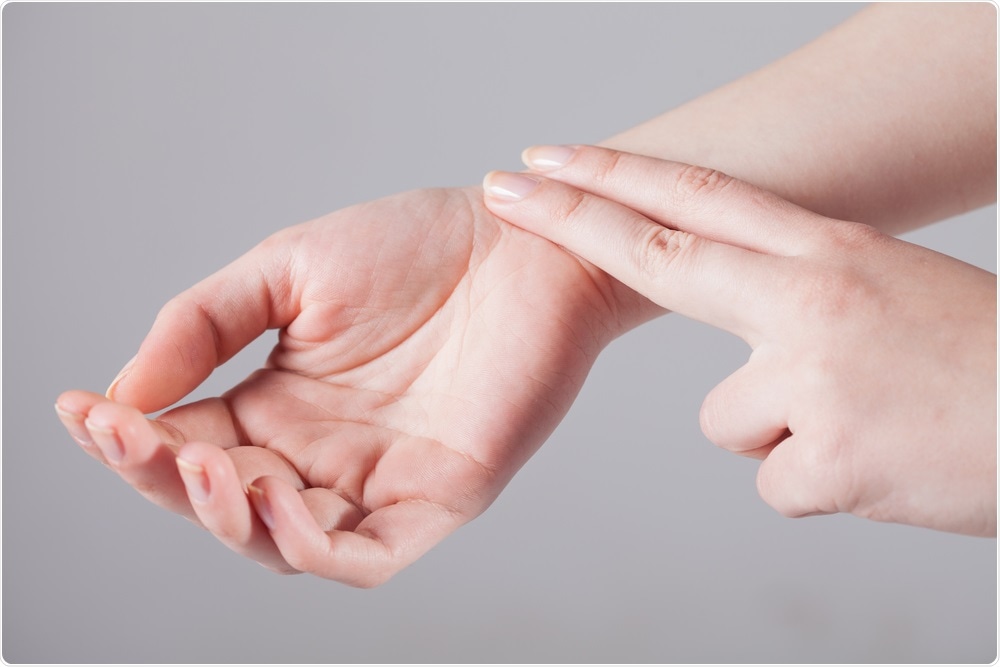
Men who have a resting heart rate of 75 bpm are twice as likely to die early
When was the last time you measured your resting heart rate? Having a resting heart rate of 75 beats per minute (bpm) during middle-age may double the risk for early death, according to new research published in the journal Open Heart. The study involved hundreds of men who had their resting rates measured on two occasions over the space of 10 years.
 Den Rise | Shutterstock
Den Rise | ShutterstockA resting heart rate of 75-bpm (which is considered normal by the UK NHS) was shown to double the risk of early death. Men whose heart rate increased during their 50s were also more likely to develop heart disease in their 60s.
A resting heart rate refers to how quickly the heart beats once a person has been resting for at least five minutes. A rate of 50 to 100 bpm is considered to be normal, but lower rates indicate better cardiovascular fitness and more efficient heart function.
For the study, lead author Salim Barywani (University of Gothenburg, Sweden) and colleagues, investigated the impact that a resting rate at the higher end of the scale has on long-term health and risk for early death (before the age of 75).
Barywani and colleagues analyzed 798 men (aged 50 or older) at random from the general population who had filled out surveys in 1993 about lifestyle, family history of cardiovascular disease (CVD) and stress levels. The participants had also undergone a medical check that included a measure of their resting heart rate.
The men were then divided into four groups: those with a resting rate of 55 or fewer bpm; 56−65 bpm, 66−75 bpm, and more than 75 bpm.
The men’s resting heart rates were then measured again in 2003 and 2014 to asses any changes in rate between 1993 and 2003, as well as death from any cause and any treatments the men had received up to 2014.
The team found that a resting rate of 75 bpm or higher was associated with a two-fold increased risk of death from cardiovascular disease or coronary heart disease (CHD), compared with those who had a rate of 55 bpm or lower.
Men with resting heart rates that remained stable between 1993 and 2003 (when the men were in their 50s) were also at a 44% lower risk for developing CVD over the next 11 years, compared with those with a rate that had increased. Furthermore, for every additional increase in bpm, there was a 3% increased risk for death from any cause, a 1% increase for CVD and a 2% increase for CHD.
Barywani says that monitoring patients’ resting heart rate over time may help to identify those who are at an increased risk for premature death:
What causes a high resting heart rate?
According to the American company Fitbit, some factors that can increase resting heart rate are sleep deprivation, over-exercising, stress, and dehydration.
Sleep deprivation: People who constantly feel tired may be suffering from chronic sleep deprivation, which can cause fatigue, lower metabolic rate and increase the resting heart rate.
Over-exercising: An increased resting rate during periods of engaging in heavy training can be a signal to cut back on exercise and ensure the body has enough time to repair and adapt.
Stress: Ongoing psychological stress can increase the resting rate over time. Experiencing the “fight-or-flight” response regularly can raise the resting rate and increase the risk of CV events. Relaxing activities such as meditating, reading or walking can help to alleviate stress.
Dehydration: A temporary increase in resting heart rate may occur on a hot day, as the body tries to cool down, but it can also indicate dehydration, in which case, drinking more water could help to bring the resting rate back down.
How can I measure my resting heart rate?
To measure the resting heart rate, a person can take their pulse (after resting for at least five minutes) by counting the number of times the heart beats over the course of a minute.
Alternatively, the beats can be counted over 30 seconds and then doubled or counted over 15 seconds and multiplied by four. The pulse can be felt in the wrist, near to the base of the thumb or in the neck below the jaw.
Steps you can take to reduce your resting heart rate
Many factors influence a person’s resting heart rate, but, generally, aging tends to increase the rate and regular exercise tends to lower it. Four things people can do to start lowering their resting heart rate include:
- Increasing exercise: Walking briskly, swimming or cycling increases heart rate during the exercise and for a short while afterward but gradually decreases the resting rate over time.
- Reducing stress levels: Relaxing activities such as meditation and ta chi lower the resting rate over time.
- Avoiding tobacco smoking: People who smoke tobacco have higher resting rates then people who do not smoke and quitting can bring the resting rate back down.
- Shedding the pounds: The larger a person is, the harder their heart must work to supply the body with blood and losing weight can help to lower a high resting rate.
Commenting on the current research findings, Ashleigh Li, from the British Heart Foundation, says:
The study is also observational and cannot establish cause, but the results do imply that tracking changes in the resting heart rate over time could be a useful way to identify future cardiovascular risk.



































No hay comentarios:
Publicar un comentario